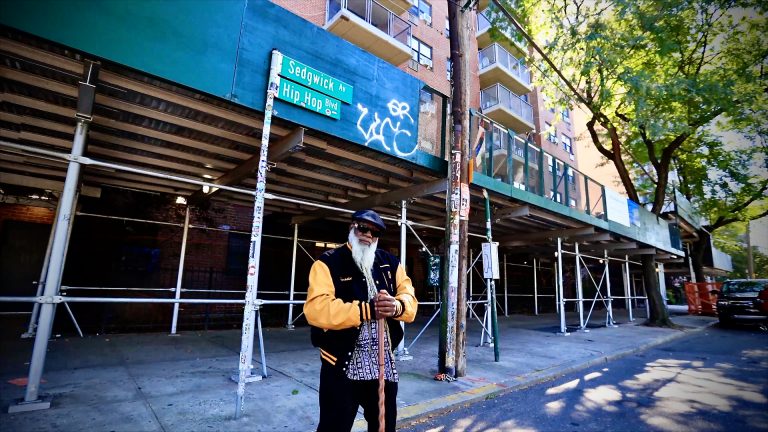A hip-hop pioneer who made Pittsburgh home steps back into the national spotlight with a new television show—and as the chief curator of the Universal Hip-Hop Museum
By BlackPittsburgh.com Staff
Paradise can be defined as an ideal place or state. Hip-hop’s paradise probably only exists in the minds of its most ardent creatives – the people for whom hip-hop is an integral part of their lives.
Paradise Gray, who secured his place in hip-hop history as a member of the early 1990s conscious rap group X Clan, sat with BlackPittsburgh to reflect on his long legacy in the culture—from promoter, emcee, songwriter and producer to now spearheading the new TV show Hip-Hop Treasures [A&E], as well as serving as curator for the forthcoming Universal Hip-Hop Museum in the South Bronx. Through both roles, Gray is poised to play a lasting role in defining the culture.
Hip Hop Treasures is trailblazing a journey through some of the most fascinating collections kept by artists, like Fat Joe, Jadakiss, and the late Biz Markie. Executive produced by Gray, Hip Hop Treasures’ features Ice-T and LL Cool J as hosts. Season one wrapped and debuted in Fall 2023, and the producers are hopeful for another season.
Gray is clear about which episode was his greatest treasure.
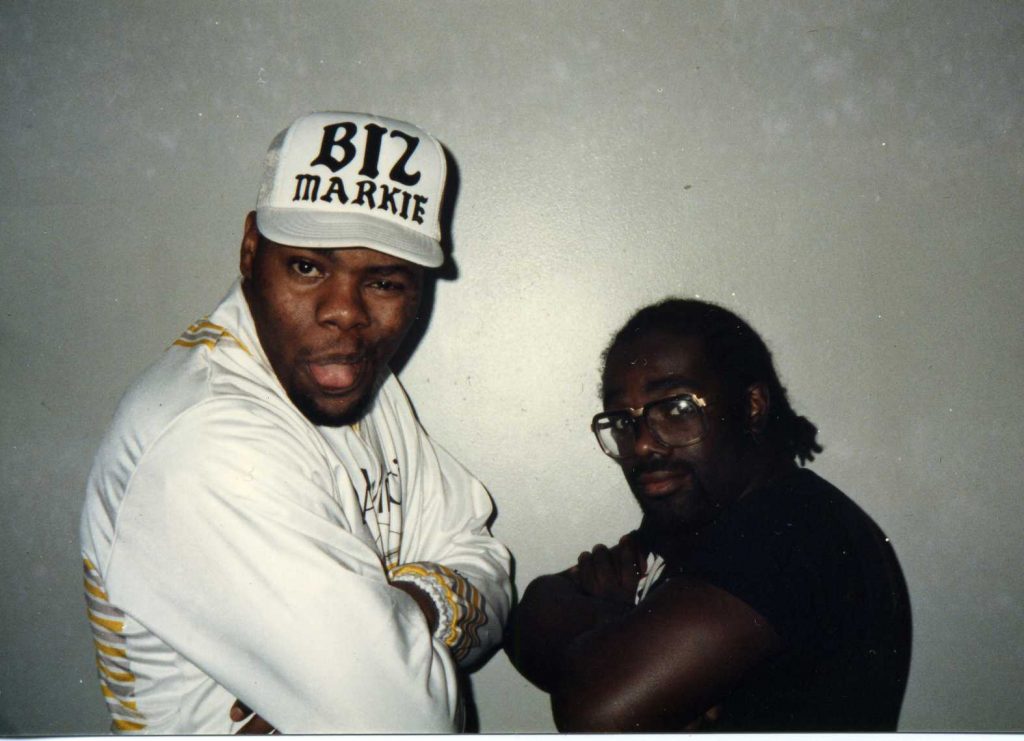
“My favorite episode was the Biz Markie episode,” he says. “Not only because Biz Markie was one of my best friends since we were 17, but I loved that dude, and we were always competing when it came to collecting.”
Producing and co-hosting the episode was bittersweet for Paradise. In his competition with Biz for “best collector” bragging rights, Paradise says he often felt that Biz exaggerated his archive. Unfortunately, Biz passed away before Paradise was able to find out that he hadn’t been exaggerating at all.
“He collected everything: all the pop icons, all the toys from my childhood,” Gray says. “But one of my favorite things we found was a couple of his rhyme books. We found a book where he wrote “Just a Friend” and he had like three different versions of it in one book.”
For Gray, collecting the artifacts and material elements of the culture is a cornerstone of his life’s work.
It was the love of the women and children in Pittsburgh that made me stay. They reminded me what I was fighting for.
Paradise Gray
Hip Hop Treasures is not reality TV, nor is it a crime drama set somewhere in inner-city America. This is a show about how artists archive culture. A show about hip-hop aficionados and their extensive collections of memorabilia might have been unimaginable when the culture began back in the 1970s. Yet, somehow, Gray had a sense of the possibilities early on in his life.
Video tour of Universal Hip-Hop Museum. Video Credit: Emmai Alaquiva
“I started collecting hip hop fliers and memorabilia in 1978, 79,” says Gray. “I collected comic books and baseball cards . . . and what better than hip-hop flyers because they reminded me of superheroes.”
For Paradise, hip-hop was like the Marvel universe.
“The hip-hop universe was equal (to Marvel) except I could see my heroes walking down the street,” he says. “I’m hip-hop’s greatest fan. I collected every flyer, magazine, and poster – anything I could find related to hip-hop. I just kept it and saved it. Photos, tickets, promotional photos – everything.” That early impulse to collect evolved into a cornerstone of the collection at The Universal Hip Hop Museum.
As a part of the promotional rollout for the museum, which is expected to open in early 2025, Gray — along with Martha Diaz (associate archivist and curator) and Prime Minister Pete Nice (co-curator who was part of the rap group 3rd Base)—is currently producing pop-up exhibits at locations around the country. They have been rolling up at HBCUs, and earlier this year posted up at the 50th Anniversary of Hip Hop concert at Yankee Stadium.
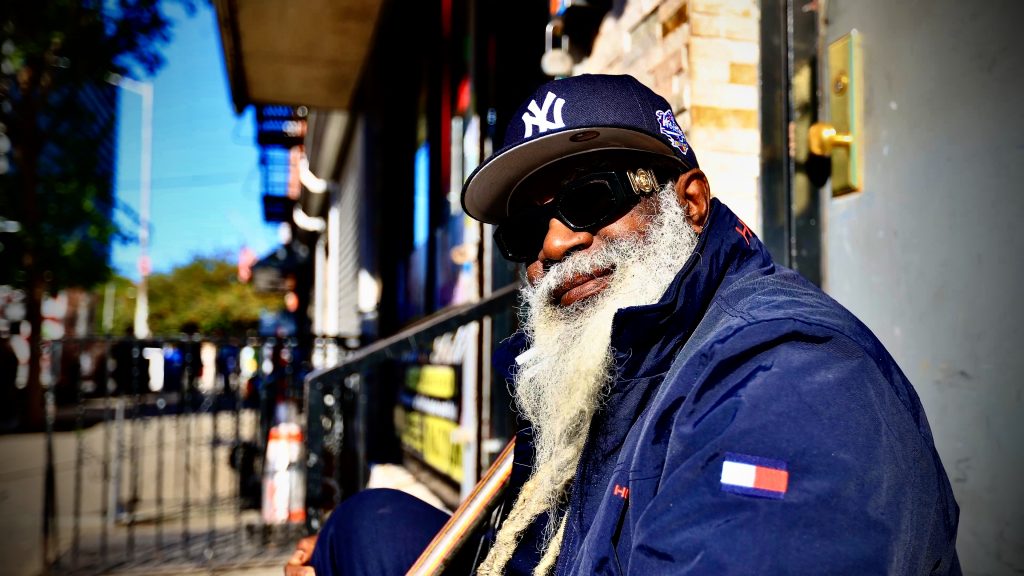
“The future of the museum is the future of hip-hop,” Gray tells us. “We’re building a museum, not a mausoleum. This is not where hip-hop goes to die and be memorialized, but where hip-hop goes to live and be cultivated. It’s not just the celebration of what has happened, but it’s also an incubator and a motivator and a destination to learn how to practice hip-hop and to imagine a future beyond what the past has offered.”
Ground zero for Gray is the Bronxdale Projects in Soundview, The Bronx (now known as the Sonia Sotomayor Houses and Community Center). In those early days, Gray says his hometown repped the Bronx as thoroughly as 1520 Sedgwick, which long ago was christened as the birthplace of hip-hop.
But Gray moved around the boroughs of NYC as a youth. “It was pretty incredible,” he says. “It’s like we had four or five houses. One week you might be living in Harlem, then one week you might be in the Bronx, or you might be in Brooklyn. It was one family, but we had multiple places to dwell.”
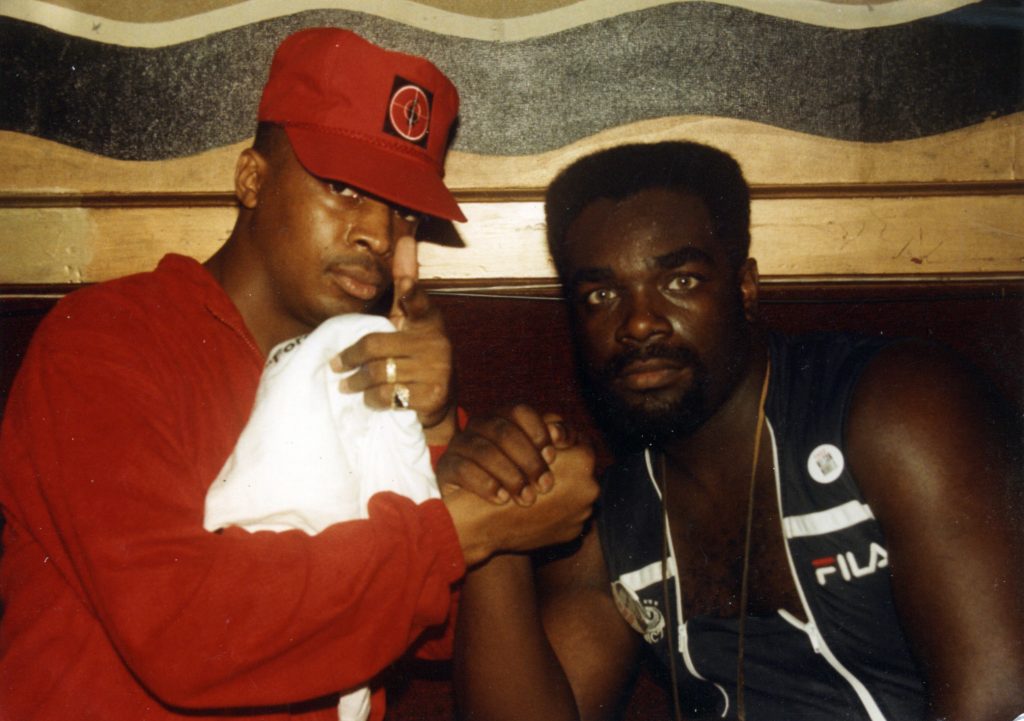
He even started making beats at a formative age. “In school, I was the best beatmaker in the lunchroom,” he tells us. “Every day, I had new beats.” His ear was nurtured through his mother’s love of Black music.
Memorabilia and nostalgia are built into the culture of hip-hop naturally and organically because hip-hop is a collection. It’s a collection of the best of everything that the world has to offer, and it was originally curated by the founding fathers of the culture.
Paradise Gray
He jokes about her being the “program director of his life” when he was a child. “Every Friday my mother would come home with a fist full of 45s from the local record store,” he says. “She would bring home James Brown, George Clinton, Sly and the Family Stone, Earth, Wind & Fire, Coltrane, Thelonius Monk.”
Some of that program direction prepared Gray for his pivotal role in incubating the golden age of hip-hop through the legendary Latin Quarter. Hip-hop writer Mr. Davey D says that the Latin Quarter was “the place where every hip-hop artist came from far and wide to be blessed back in the golden era of hip hop in the mid to late 80s. It was the club of clubs.”
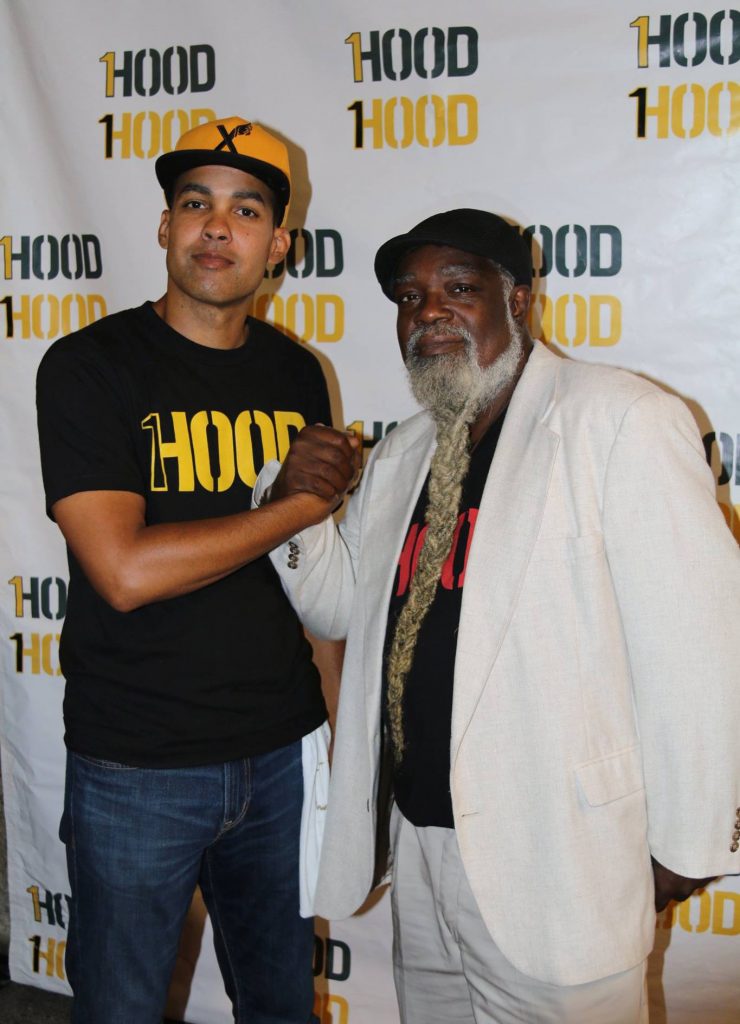
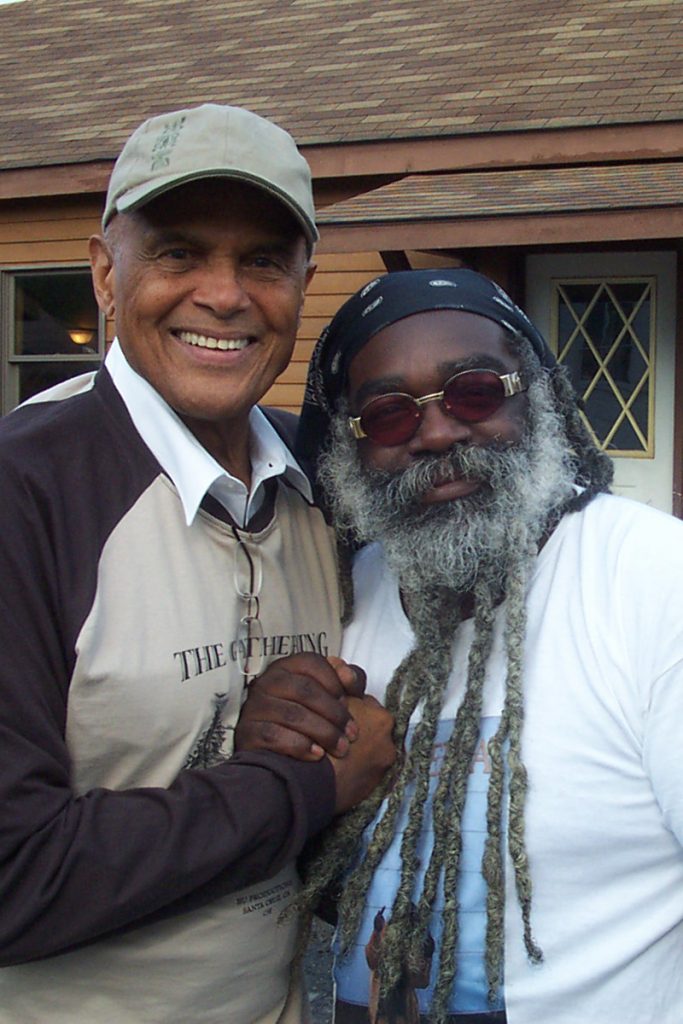
Paradise and Jasiri X at Repair the World in Pittsburgh in 2016. Paradise and Harry Belafonte at “The Gathering” in Onondaga Territory in 2006, one several events that led to formation of One Hood. Photo Credit: 1Hood Media
Gray wrote a book, No Half Steppin’: An Oral and Pictorial History of New York City Club The Latin Quarter and the Birth of Hip-Hop’s Golden Era (with Giuseppe Pipitone) about his experiences during that pivotal era and his role as a promoter and presenter of some of hip-hop’s greatest acts, including Kurtis Blow, Run DMC, LL Cool J, The Fat Boys, Public Enemy, Salt-N-Pepa, Boogie Down Productions, A Tribe Called Quest, De La Soul, and The Jungle Brothers. This list goes on. He hosted Tuesday nights at the Latin Quarter in the mid through late 1980s. “I just invited all my friends, put them on flyers, and sold the place out,” he tells us. “We had people [lined up] around the corner.”
Biz Markie was one of my best friends since we were 17. I loved that dude, and we were always competing when it came to collecting.
Paradise Gray
Part of Gray’s archival collection was built during his time at the Latin Quarter, or “LQ” as it was called. “I think a healthy eye for arts and culture is part of hip-hop,” says Gray. “Memorabilia and nostalgia are built into the culture of hip-hop naturally and organically because hip-hop is a collection,” he says. “It’s a collection of the best of everything that the world has to offer, and it was originally curated by the founding fathers of the culture.”
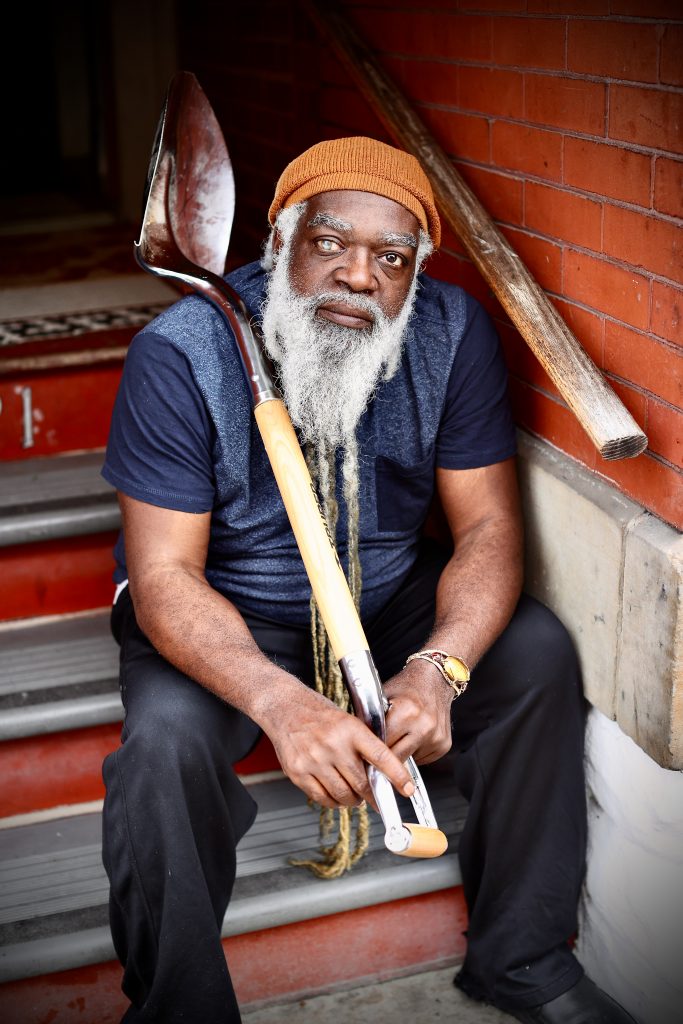
Gray is also one of the founding members of One Hood,* where he extended his legacy of mentoring emerging hip-hop artists, as well as more well-known Pittsburgh area emcees, including the late Mac Miller, Wiz Khalifa, and Jasiri X, who is also a founding member of One Hood.
When he is not on the road, Gray splits time between New York City and Pittsburgh. He relocated here in 1992. He says he sacrificed his career to get away from the industry and “to avoid the corruption, the pain, suffering, backstabbing and the rat race.”
“I wasn’t looking for a calmer, quieter life, but it found me,” he tells us. “I was able to relax, flush all my bad habits and focus on a beautiful woman and a family. And it was the love of the women and children in Pittsburgh that made me stay. They reminded me what I was fighting for.
“Pittsburgh used to be called the Crossroads of America, particularly the Hill District,” Gray continues. “In my group X Clan, we were inviting people to the crossroads all those years, but I have a good inkling that the crossroads is the same place that the crossroads always was: right here in the Burgh, just like the three rivers converge to create the point.”
*Editor’s note: One Hood became 1Hood Media Academy – Nonprofit in 2017 and is the publisher of BlackPittsburgh.com


